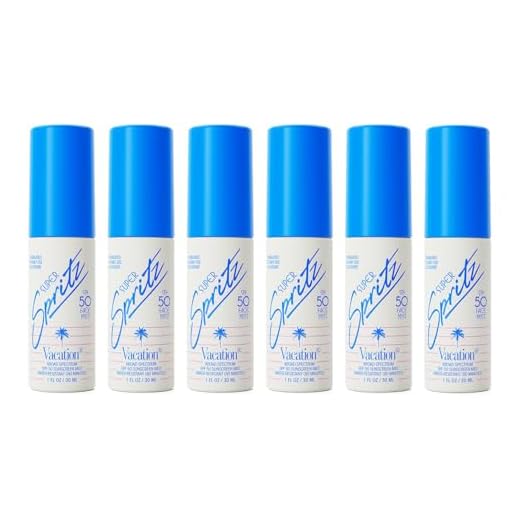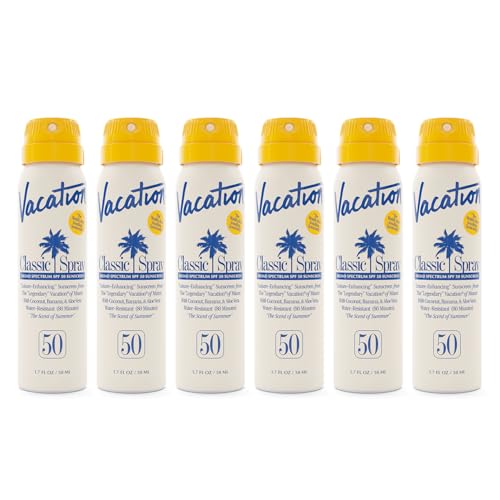



Transporting pressurized containers in personal belongings exposes travelers to notable risks, particularly regarding potential leaks or explosions under varying air pressure and temperature conditions. Airlines generally prohibit items such as sprays, solvents, and flammable materials within the hold, given their hazardous nature. Always check carrier regulations before packing any such items.
In instances where these products must be transported, select non-flammable options and ensure containers are well-sealed to minimize risks. Preferred alternatives include smaller, non-pressurized items or travel-sized versions that comply with aviation safety guidelines.
For instance, many brands offer plastic bottles or jars that hold similar products without the risk associated with gas pressure. Travelers should also consider utilizing professional shipping services for necessary items that fall into restricted categories. Keeping safety as the top priority is paramount when preparing for air travel.
Assessment of Spray Canisters in Baggage
Transporting spray canisters in baggage presents notable hazards that travelers must acknowledge. These products, commonly containing compressed gases, can react to changes in temperature and pressure during transit. To mitigate risks, avoid placing any canisters over the maximum allowed quantity. Airlines typically limit the weight and volume permitted to minimize potential incidents.
Regulatory Compliance
Familiarize yourself with airline regulations regarding aerosol products. Each carrier has specific guidelines about items considered flammable or toxic. Check the product labels for safety symbol indications; if the label suggests avoiding heat, reconsider your packing approach. Containers exceeding 100 milliliters are often prohibited in standard baggage.
Safety Practices
Store canisters upright and securely to prevent leakage or damage. Ensure that the caps are firmly attached to avert accidental discharges. Review your items before packing to discard any that could pose a risk. Opt for travel-sized alternatives whenever possible, as they often meet airline guidelines while reducing potential hazards.
Understanding the Risks of Aerosols in Air Travel
The transport of pressurized products poses specific hazards during flights, particularly when situated in the storage compartments of an aircraft. Ensuring safety requires awareness and adherence to guidelines provided by airlines and aviation authorities.
Key Considerations
- Identify the contents: Many items, including personal care products and household cleaners, may contain flammable substances.
- Check volume limits: Airlines often impose restrictions on the amount of fluid a container can hold, typically not exceeding 100 ml for carry-ons. While rules differ for hold bags, it’s paramount to verify regulations with your airline.
- Secure packaging: Ensure containers are well-sealed to prevent leakage, which could lead to contamination of other belongings or create hazards.
- Alternative options: Consider using non-aerosol alternatives for personal care or cleaning needs. This can minimize risks significantly.
Recommendations for Travelers
- Review your items before packing and eliminate those that may not meet safety standards.
- Store products in original packaging to provide clear identification of contents.
- Educate yourself about the characteristics of specific items, especially regarding their flammability and pressurization levels.
- If necessary, consult resources that list safe products for travel, such as the best pressure washer for car cleaning and detailing.
By following these guidelines, travelers can significantly reduce the risk associated with traveling with pressurized products, ensuring not only individual safety but also the safety of fellow passengers and crew members.
Guidelines for Packing Aerosols in Checked Bags
Ensure that containers do not exceed 500ml (17 oz) in size. This is a standard limit for many travel regulations and helps minimize potential hazards during flight.
Always check for any specific airline policies regarding propellant products, as these can vary significantly. Some airlines may impose stricter limitations or may not allow certain types of products at all.
Keep products in their original packaging to provide clear labels, including safety warnings and instructions for use. This aids in identification and reduces confusion during security checks.
Securely seal all containers to prevent leakage. Consider using plastic bags to further cushion these items and contain any spills that may occur.
Be Aware of Temperature Sensitivity
Products may be sensitive to extreme temperature changes. Storing them at room temperature prior to your journey reduces the risk of expansion or container rupture during transit.
Consider Alternative Forms
If possible, look for non-pressurized alternatives like creams or roll-ons. These options eliminate the risk associated with pressurized cans and can be safer choices for travel purposes.
Common Types of Aerosol Products and Their Hazards
For travel, understanding potential risks associated with spray products is critical. Certain items pose threats due to flammability, toxicity, and pressurization. Below is a summary of common items and their associated risks.
1. Personal Care Products
These include deodorants, hair sprays, and shaving creams. Many contain flammable ingredients. Always check for a flame symbol or warning labels before packing.
2. Household Cleaners
Products such as air fresheners and insect repellents often contain harmful chemicals. Inhalation can lead to respiratory issues. Ensure these are securely sealed and check for prohibited items.
| Type of Product | Potential Hazard |
|---|---|
| Personal Care | Flammability |
| Household Cleaners | Toxic Inhalation |
| Painting Supplies | Explosive Pressure |
| Food Items | Pressure Build-Up |
Choose wisely when selecting spray items for your trip. For ideal packing solutions, consider options like a best waist pack for cameras to keep essential items accessible. Moreover, look into the best luggage brand in japan for reliable bags that meet requirements while ensuring safety.
What Airlines Say: Rules and Regulations on Aerosols
Most airlines permit specific pressurized containers in bags but enforce strict limits on volume and quantity. Generally, containers holding more than 0.5 liters are prohibited in shipped bags.
Major carriers, including Delta, American Airlines, and United, restrict items classified as flammable or potentially explosive. Compressed gases, like certain paint sprays or cooking sprays, fall under these categories. It’s essential to check individual airline guidelines prior to travel.
Liquid volume regulations typically apply. Containers exceeding 100 milliliters are often not allowed, even if packed within larger parcels. Confirm the exact specifications with the carrier for a hassle-free experience.
Passengers must disclose items to airline staff during check-in and adhere to any additional security measures. Violation of packing rules may lead to confiscation of items or additional screening protocols.
Travelers should consult the airline’s website or customer service for the latest updates and specific regulations regarding metallic containers and any other related products to ensure compliance.
Safe Alternatives to Aerosol Products for Travelers
Opt for pump sprays instead of pressurized containers. They maintain performance without the risk associated with compressed gases.
Consider solid or cream formulations for lotions and deodorants. These options are compact and comply with transportation regulations, offering a mess-free experience.
Eco-Friendly Options
Explore refillable containers for liquids and gels. These not only minimize waste but also allow you to carry just the amount needed. Look for biodegradable products that align with environmentally conscious choices.
Natural Solutions
Utilize essential oils in rollerball applicators for fragrances and soothing effects. These provide a versatile and portable alternative, avoiding potential hazards of traditional sprays.
For cleaning products, focus on concentrated formulas that can be mixed with water at your destination. This reduces the volume of items transported while maintaining cleaning efficacy.







